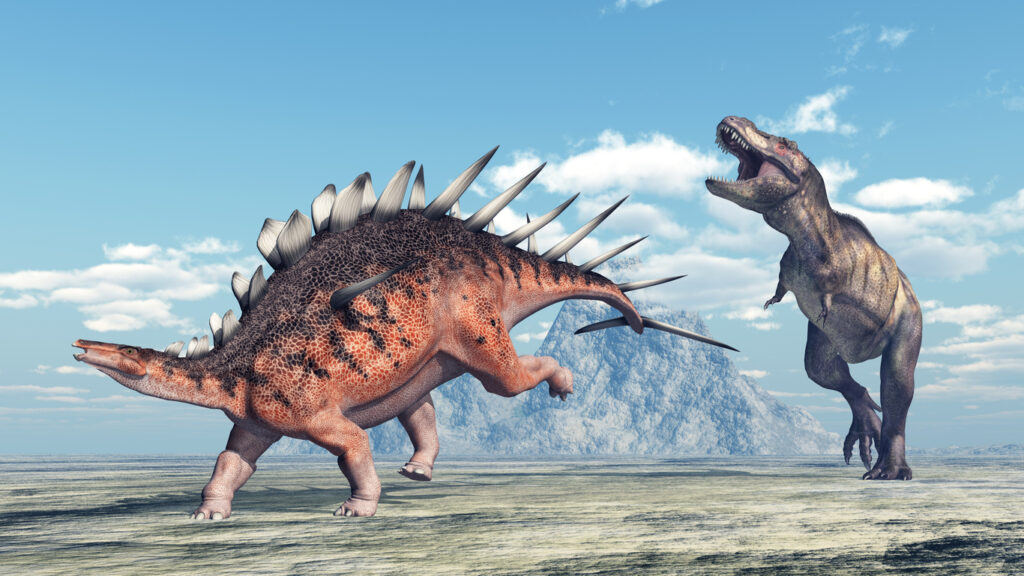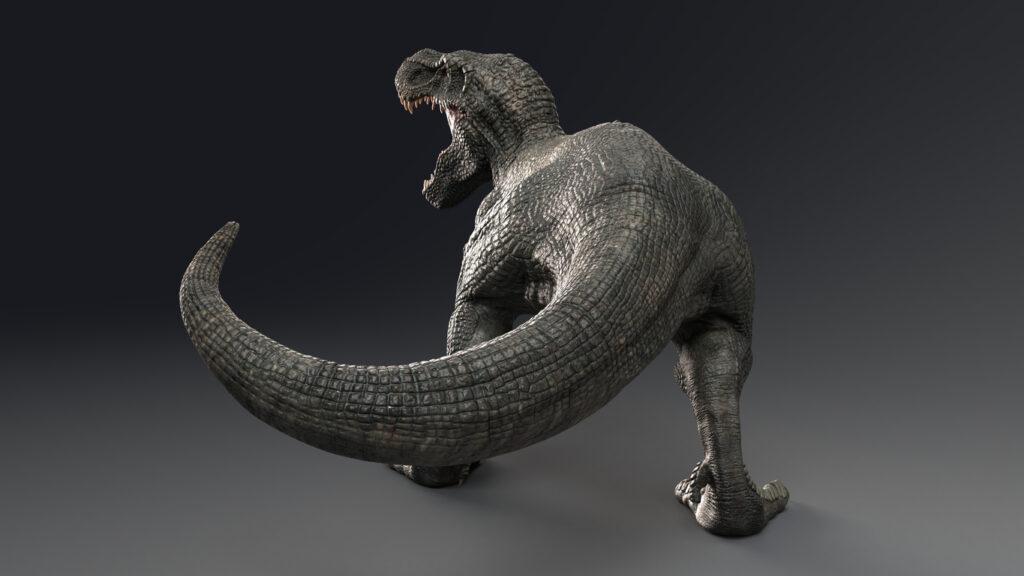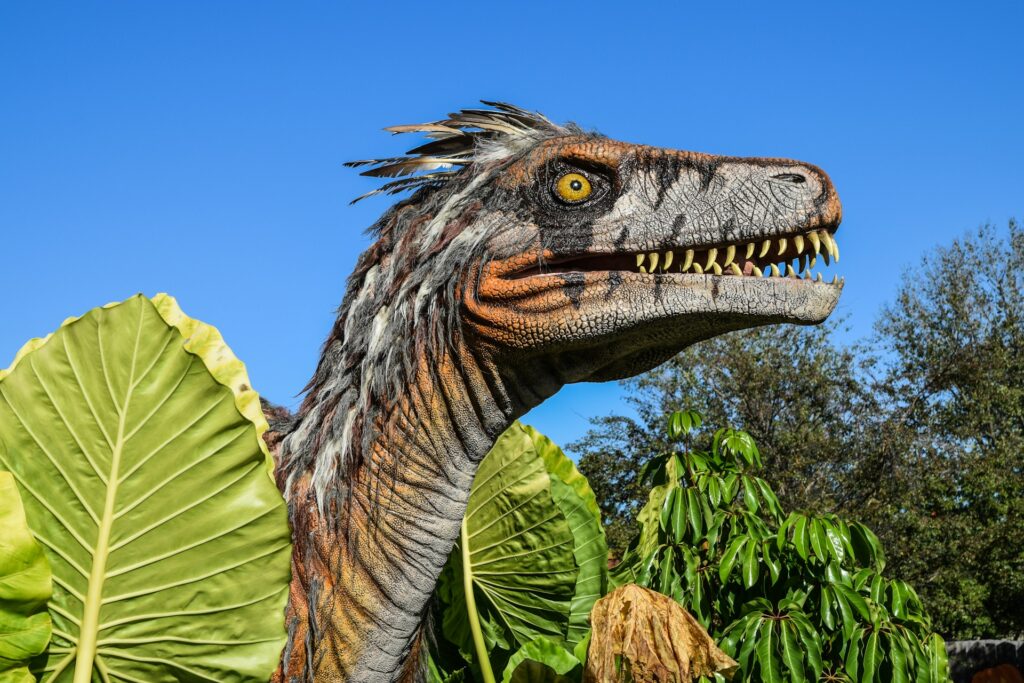
We tend to picture dinosaurs as all teeth, claws, and stomping feet, but the real secret to their success wasn’t just brute force. It was the oddball adaptations, the evolutionary wildcards, and the strange little tweaks that let them survive everything from swamps to deserts to ancient volcanic winters. These weren’t just prehistoric monsters—they were some of the most resilient, creative lifeforms Earth has ever seen. Here are some of the stranger features that helped them stick around for over 160 million years.
Hollow bones for a massive advantage
While it might sound like a weakness, having hollow bones actually gave dinosaurs a big leg up—literally. These bones were strong but incredibly lightweight, which helped large species move faster and more efficiently. This feature also made flight possible later on for their descendants. So those hollow bones weren’t just about weight—they were about adaptability, speed, and evolution having a long-term plan.
Built-in air sacs that helped them breathe like champs
Many dinosaurs had complex air sac systems connected to their lungs, similar to modern birds. This meant their breathing was more efficient than most other reptiles and mammals, even by today’s standards. In extreme climates or after volcanic eruptions, that supercharged oxygen system probably kept them going when other creatures couldn’t. Basically, they came equipped with natural high-performance lungs.
Tiny arms… that still packed a punch
T. rex’s arms get all the memes, but they weren’t useless. They were likely powerful and helped with gripping prey or pushing themselves up from the ground. Other dinosaurs with tiny forelimbs may have used them for balance, mating, or specific tasks we still don’t fully understand. Evolution doesn’t waste energy for no reason—if they kept their tiny arms, it’s because they were doing something useful, even if it looks ridiculous now.
Feathers long before birds took flight
Feathers didn’t start out as flight tools—they likely began as insulation or display features. Some dinosaurs had full coats of them, even if they weren’t airborne. Think of them as the original dino fashion statement that doubled as climate control. It’s wild to think that feathers, one of the most iconic bird traits, actually came from creatures like raptors and possibly even tyrannosaurs. Evolution got playful early with texture.

Tail weapons you definitely wouldn’t want to mess with
Some dinosaurs evolved tails that were less about balance and more about full-on combat. Ankylosaurs had tail clubs that could shatter bone. Stegosaurs had massive spikes, like nature’s version of a spiked baseball bat. These weren’t just cool-looking accessories—they were functional, often devastating, and helped even the plant-eaters stand their ground against predators.
Built-in solar panels (kind of)
The famous sail-backed Spinosaurus and Dimetrodon weren’t just showing off. Their spines likely helped regulate body temperature by absorbing or releasing heat, sort of like organic solar panels. In climates where temperatures fluctuated wildly, this gave them an edge. They could soak up heat early in the morning or cool down faster when things got scorching. Smart survival strategy in a hot-blooded world.
Beaks that could do more than just nibble
Some herbivorous dinosaurs like hadrosaurs and ceratopsians had strong beaks that worked like built-in gardening tools. These helped them strip, shred, and crush plant material with impressive efficiency. While others relied on teeth, these guys had multipurpose beaks that let them graze in tough environments. It’s a weird mix of turtle meets lawnmower, but it clearly worked.
Super senses dialled up to 11
Predators like T. rex had insanely powerful senses—especially their sense of smell. Some researchers believe it was so good, they could track prey from miles away. Others had acute vision and hearing that let them hunt even at night. Having a sensory system this advanced made them nearly unstoppable at the top of the food chain. You couldn’t sneak past a T. rex, not even if you tried the Jurassic Park “don’t move” trick.
Nesting behaviours that show surprising care
Dinosaurs didn’t just lay eggs and walk off. Some species guarded their nests, arranged them in careful circles, and may have even brought food to their young. Fossils have shown adults preserved while protecting their eggs—evidence of real parenting instincts. That kind of nurturing behaviour gave hatchlings a better shot at survival. It’s a far cry from the cold-blooded monster stereotype—and much closer to the way birds raise their chicks today.
Gigantism that dominated entire ecosystems
Sauropods like Argentinosaurus and Brachiosaurus reached lengths of over 100 feet. But being massive wasn’t just for show—it helped regulate their internal temperature, deter predators, and access food other herbivores couldn’t reach. They were basically walking ecosystems, changing the landscape just by existing. Their sheer size shaped forests, altered rivers, and created space for all kinds of smaller species to thrive around them.

Jaw mechanics tailored to specific diets
From duck-billed hadrosaurs to bone-crunching theropods, dinosaur jaws evolved into precision tools. Some could grind tough plant material like ancient tractors, while others had serrated teeth perfect for slicing flesh. Each jaw was an evolutionary experiment in efficient eating, fine-tuned over millions of years. It wasn’t just about surviving—it was about thriving on a specific menu.
Crests and frills that worked like multi-tools
Think of Triceratops’ frill or Parasaurolophus’ head crest. These odd structures weren’t just decorative—they may have helped with everything from attracting mates to regulating temperature to amplifying sounds. Some could’ve acted like natural speakers, sending calls across vast distances. Others may have intimidated predators or helped identify members of their group. Whatever the function, they were more than prehistoric headgear.